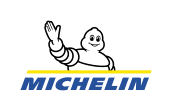DAMAGE RECOGNITION ON AIRCRAFT TIRES
ISSUE
When damage is reported on an aircraft tire, it is sent to a handling center. Depending on the very nature of the damage, it may or may not be possible to retread (repair) the tire. However, the procedures are very specific and the diagnosis of the damage must be perfectly objective. How can we be sure of the correct diagnosis? How to know which procedure should be followed?
SOLUTION PROVIDED
Neovision designs and develops tire damage recognition technology. This technology, available via a smartphone or tablet application, allows the technician to diagnose the damage and then send the procedure to be followed. At the same time, the damage is recorded as part of the tire’s life tracking.
CUSTOMER BENEFIT
With this technology, Michelin is taking a new step towards digitalization. At the same time, traceability is improved by better monitoring of the tire’s life. Finally, while the technology makes diagnosis more reliable and faster, the operator also has access to the procedure they need to follow, thus reducing errors.
REALIZATION
Michelin’s ambition is to improve its customers’ mobility on a sustainable basis. As a leader in the mobility sector, Michelin designs, manufactures and distributes tires best suited to their needs and uses, as well as services and solutions to improve transportation efficiency.
Headquartered in Clermont-Ferrand, France, Michelin is present in 170 countries, employs more than 127,000 people and operates 69 tire plants that together produced approximately 200 million tires in 2019.
Michelin also offers products and services that provide customers with unique moments during their travels and journeys. Michelin also develops high-tech materials for a wide range of applications.
Michelin is therefore a world reference on the tire market. The company equips all types of vehicles, from sports tires to aviation. Neovision has worked with the Business Aviation division.
It was during an Open Innovation Day organized by Minalogic that Michelin and Neovision got to know each other.
Following this day, the talks multiplied and intensified. And a need then emerged at Michelin Aviation: to improve the treatment of damaged tires. Several aspects needed to be taken into account in order to do this: damage diagnosis, traceability and finally access to the right procedure.
Once the need was clearly identified, Neovision was able to leverage its AI expertise. While Michelin was developing the application, Neovision was designing and developing AI that could recognize specific damage.
However, to achieve this, Neovision needed data, images that were representative of the damage to be classified. An acquisition protocol was therefore put in place and the Michelin operators took several pictures of the different damages. These images were then annotated with the name of the damage present on the photo. The data set of several hundred images, essential to the development of the AI, was thus ready. 80% of the images were going to be used as a training base and 20% for validation.
Now that Neovision had the images it needed, the project could move forward. The images were first pre-processed.
In order to ensure that the work was done with the most suitable model for the task, a hyper-parameter optimization phase was done. Starting from various standard Deep Learning models for this type of task, and playing with the optimizers and other parameters of the model, several combinations were tested, in order to prune the least promising parameters. The results were satisfactory.
Afterwards, a question arose as to the impact of the flash when taking pictures. Was it better to take pictures with or without flash? Would performance be degraded? According to the tests carried out, this was not the case.
Once the model was ready, it had to be integrated into the mobile application developed by Michelin. No small task, but Neovision’s software engineering expertise made it possible to meet the challenge.
ASSOCIATED TECHNOLOGIES AND EXPERTISE
COMPUTER VISION, DEEP LEARNING, MOBILE APPLICATION
TESTIMONIAL

« We are very satisfied with this collaboration. Neovision shows agility, responsiveness and professionalism. The proximity of the French technical teams is also a key factor of success in this type of exploratory approach»
Vincent Martin, R&T Aircraft Tire Program Manager at Michelin
Date
16 October 2020
Category
Application Mobile, Cloud, Computer Vision, Deep Learning, Industrie


